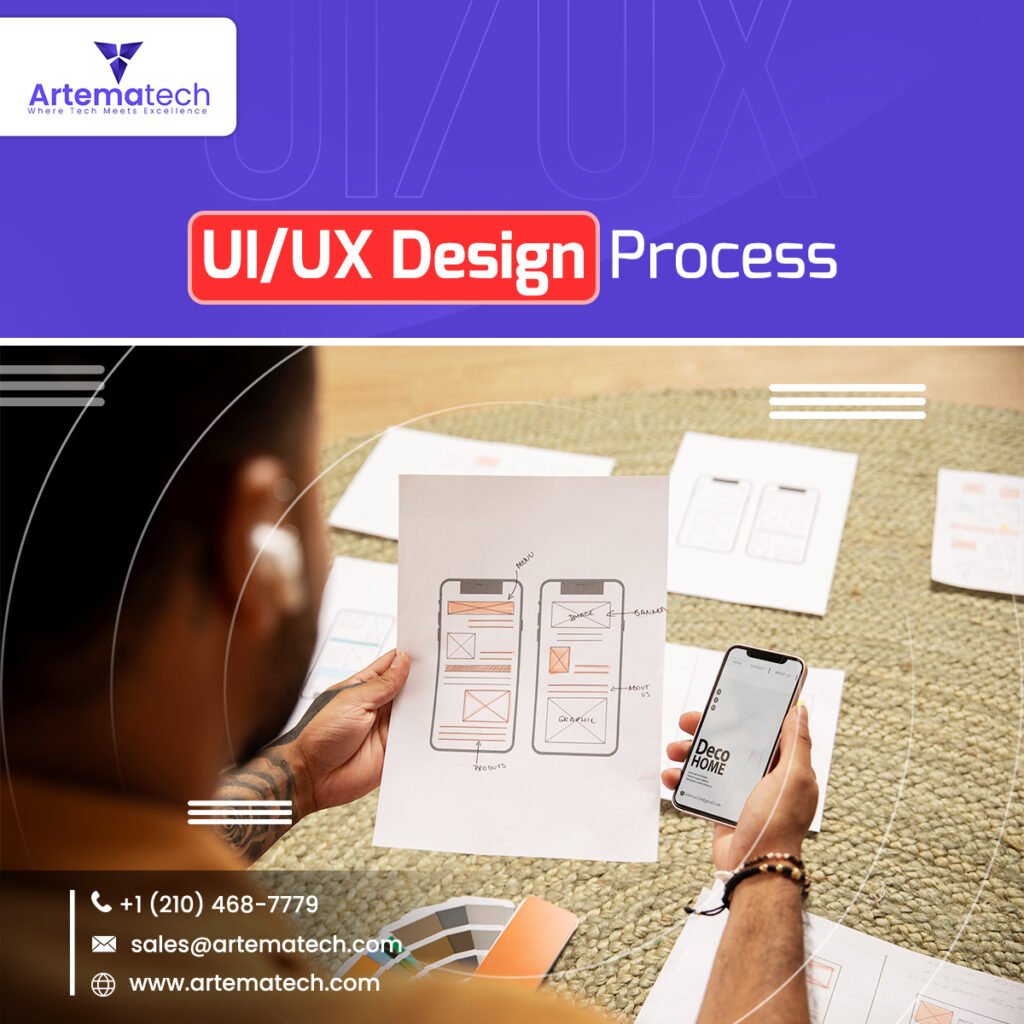In the fast-moving digital world, the UI UX design process plays a vital role in the success of any product. Whether it’s a website, mobile app, or software, the design must focus on both functionality and aesthetics. While UI ensures visual appeal, UX takes care of user satisfaction. Together, they shape how users feel and behave when interacting with a digital product.
Understanding the key features of this process is crucial for creating engaging, seamless, and goal-driven experiences.
User-Centered Design Approach
One of the most important features of the UI UX process is its focus on the user. Every element—from layout to navigation—is designed with the user in mind. Designers gather user insights through research and testing to understand what real people need and expect.
This approach increases usability and makes the product more relevant. It ensures that the design solves user problems rather than just looking good.
Clear and Consistent Navigation
Navigation is the backbone of any digital experience. A strong UI UX design process ensures that users can move through the product without confusion. Menus, buttons, and pathways must be clearly labeled and intuitive.
Consistency across all screens allows users to develop patterns and feel in control. It improves the user’s confidence and reduces learning time.
Responsive and Adaptive Design
Today’s users access websites and apps on various devices. That’s why responsive design is a must. It allows the product to adapt smoothly to different screen sizes—mobile, tablet, or desktop—without losing functionality or design quality.
This feature also ensures higher accessibility, keeping users engaged no matter what device they use.
Interactive and Functional Prototyping
Creating working prototypes is a core feature of the UI UX design process. These clickable models allow designers and stakeholders to test ideas early. Instead of guessing how the final product will feel, users interact with prototypes to give real feedback.
This process reduces errors, improves functionality, and speeds up development. Prototypes act as a visual and interactive guide for developers.
Effective Visual Hierarchy
Visual hierarchy guides the user’s attention to important content and features. This includes the use of font sizes, colors, spacing, and alignment to show what matters most on the screen.
Strong visual hierarchy ensures that the user quickly understands where to go, what to click, and what to read first. This minimizes friction and boosts engagement.
Accessibility and Inclusivity
A modern UI UX process always includes accessibility. It makes sure that people with disabilities can use the product with ease. This means using readable fonts, proper contrast, voice navigation, and keyboard-friendly designs.
Accessibility not only widens the audience but also reflects positively on the brand’s values.
Data-Driven Design Decisions
Designers use data from user testing, heatmaps, session recordings, and feedback forms to make informed choices. Every change or improvement is based on real-world behavior, not assumptions.
This leads to better decision-making and continuous improvement after launch.
Feedback and Error Handling Systems
Every good product should tell the user what’s happening. Whether it’s a successful action or an error, clear feedback keeps users informed. The design must include confirmation messages, loading indicators, and friendly error messages.
This builds trust and improves the overall experience, especially during complex user tasks.
Microinteractions and Animations
Small animations and effects, like hover states or button transitions, enhance the user’s experience. These microinteractions make the product feel alive and responsive.
They guide the user, offer instant feedback, and bring delight to the journey.
Efficient Design Handoff and Collaboration
A refined UI UX design process includes proper documentation and design specs. Tools like Figma or Adobe XD help in smooth handoff to developers. Assets are organized, interactions are explained, and everyone works with clarity.
Collaboration between designers, developers, and project managers ensures the product vision is carried through to the final version.
Scalability and Flexibility
As businesses grow, their digital products must evolve. A good design process keeps scalability in mind. Layouts, components, and features are built in a way that they can grow or change without breaking the system.
Flexible design also supports multi-language content, future updates, and feature expansions.
Performance-Oriented Optimization
Design choices affect performance. From optimized images to lightweight animations, every part of the design must load quickly and run smoothly. A slow product frustrates users and increases bounce rates.
Performance optimization improves loading time, SEO rankings, and user satisfaction.
Conclusion
The key features of the UI UX design process define the success of any digital product. A user-centered, data-driven, and responsive approach creates experiences that are not only beautiful but also functional. These features ensure the product meets user needs, adapts across devices, and delivers value with every interaction.
Design is no longer just about visuals—it’s about solving problems, guiding behavior, and creating impact. With a focus on clarity, usability, and innovation, modern UX design builds bridges between businesses and users.
At Artema Tech, we implement these essential design features to craft products that are not only visually appealing but also highly effective. We help you turn your ideas into seamless digital experiences that users love.





